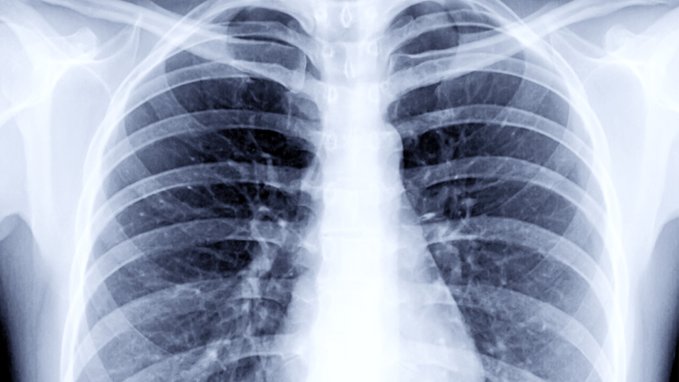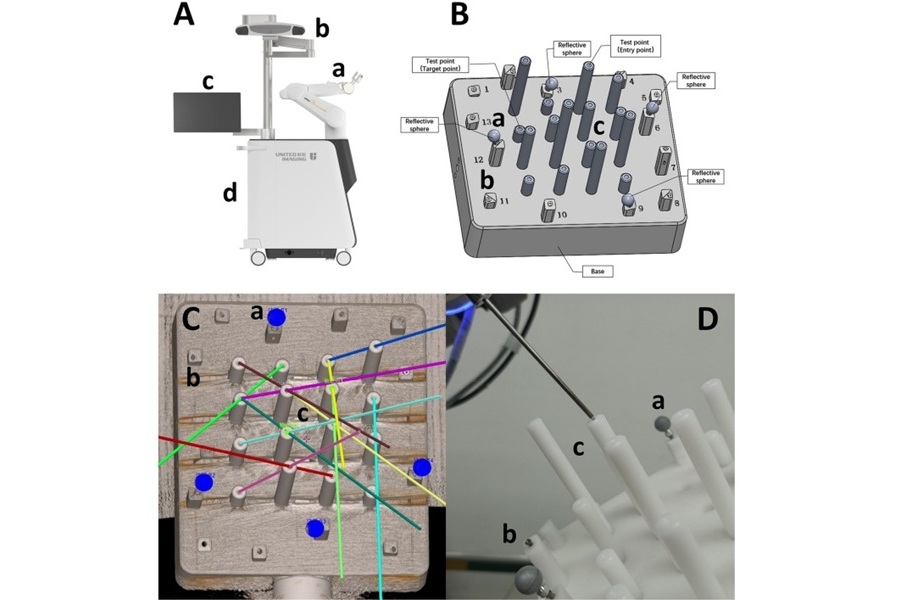COVID-19 Medical Imaging Center Enables AI-Driven Research to Better Understand SARS-CoV-2 Effect on Human Body
|
By HospiMedica International staff writers Posted on 20 Aug 2020 |

Illustration
A new center hosted at the University of Chicago (Chicago, IL, USA) and co-led by the largest medical imaging professional organizations in the US will help tackle the ongoing COVID-19 pandemic by curating a massive database of medical images to help better understand and treat the disease.
Led by Prof. Maryellen Giger of UChicago Medicine, the Medical Imaging and Data Resource Center (MIDRC) will create an open-source database with medical images from thousands of COVID-19 patients. The center will be funded by a two-year, USD 20 million contract from the National Institute of Biomedical Imaging and Bioengineering at the National Institutes of Health (NIH). Giger will co-lead the center with an executive advisory committee that includes members of the American College of Radiology (ACR), Radiological Society of North America (RSNA), and American Association of Physicists in Medicine (AAPM).
Medical images provide important windows into the detection, diagnosis and monitoring of diseases like COVID-19; for example, X-rays or CT scans of the lungs have the potential to help doctors determine the severity of the disease and decide on an optimal treatment course for a patient. But examining individual images is time consuming and difficult for physicians, and automated systems can improve accuracy and speed. For artificial intelligence to accurately analyze any given scan, many thousands of images first must be collected and annotated to train machine-learning algorithms.
By collecting and integrating images and their data via a dynamic, secure networked system, the MIDRC will provide a large-scale, open framework to enable technological advancements; guide researchers’ validation and use of artificial intelligence; and translate clinical systems for the best patient management decisions. Funded under the NIH’s special emergency COVID-19 process, MIDRC proposes to create an open-access platform to collect, annotate, store and share COVID-related medical images to enable effective and efficient clinical task-based distribution, analyses and validations. The MIDRC plans to soon upload more than 10,000 COVID-19 thoracic radiographs and CT scan images via the existing input portals of the RSNA repository and the ACR registry, allowing researchers worldwide to access the images and accompanying clinical data to answer new questions about the disease.
The committee also will oversee 12 research projects in support of solutions to the COVID-19 pandemic, overall providing funding and other resources to investigators at the ACR, RSNA and AAPM, as well as across 20 universities and the Food and Drug Administration. Additionally, the team hopes to expand the center into a resource that would span diseases and disciplines, creating focused medical imaging data commons and machine intelligence pipelines for chronic and other infectious diseases, with the federal contract renewable to USD 50 million over five years.
“We have not sufficiently explored imaging for its role in helping us fight COVID-19, especially in terms of developing machine intelligence tools and systems,” said Giger, the A.N. Pritzker Professor of Radiology. “Through the MIDRC Data Commons Portal, investigators will be able to access images and data to expedite research that will provide solutions to the COVID-19 pandemic. This will speed up the sharing of new research on COVID-19, answering questions about COVID-19 presentation in the lungs, the efficacy of therapies, associations between COVID-19 and other co-morbidities, and monitoring for potential resurgence of the virus.”
Related Links:
University of Chicago
Led by Prof. Maryellen Giger of UChicago Medicine, the Medical Imaging and Data Resource Center (MIDRC) will create an open-source database with medical images from thousands of COVID-19 patients. The center will be funded by a two-year, USD 20 million contract from the National Institute of Biomedical Imaging and Bioengineering at the National Institutes of Health (NIH). Giger will co-lead the center with an executive advisory committee that includes members of the American College of Radiology (ACR), Radiological Society of North America (RSNA), and American Association of Physicists in Medicine (AAPM).
Medical images provide important windows into the detection, diagnosis and monitoring of diseases like COVID-19; for example, X-rays or CT scans of the lungs have the potential to help doctors determine the severity of the disease and decide on an optimal treatment course for a patient. But examining individual images is time consuming and difficult for physicians, and automated systems can improve accuracy and speed. For artificial intelligence to accurately analyze any given scan, many thousands of images first must be collected and annotated to train machine-learning algorithms.
By collecting and integrating images and their data via a dynamic, secure networked system, the MIDRC will provide a large-scale, open framework to enable technological advancements; guide researchers’ validation and use of artificial intelligence; and translate clinical systems for the best patient management decisions. Funded under the NIH’s special emergency COVID-19 process, MIDRC proposes to create an open-access platform to collect, annotate, store and share COVID-related medical images to enable effective and efficient clinical task-based distribution, analyses and validations. The MIDRC plans to soon upload more than 10,000 COVID-19 thoracic radiographs and CT scan images via the existing input portals of the RSNA repository and the ACR registry, allowing researchers worldwide to access the images and accompanying clinical data to answer new questions about the disease.
The committee also will oversee 12 research projects in support of solutions to the COVID-19 pandemic, overall providing funding and other resources to investigators at the ACR, RSNA and AAPM, as well as across 20 universities and the Food and Drug Administration. Additionally, the team hopes to expand the center into a resource that would span diseases and disciplines, creating focused medical imaging data commons and machine intelligence pipelines for chronic and other infectious diseases, with the federal contract renewable to USD 50 million over five years.
“We have not sufficiently explored imaging for its role in helping us fight COVID-19, especially in terms of developing machine intelligence tools and systems,” said Giger, the A.N. Pritzker Professor of Radiology. “Through the MIDRC Data Commons Portal, investigators will be able to access images and data to expedite research that will provide solutions to the COVID-19 pandemic. This will speed up the sharing of new research on COVID-19, answering questions about COVID-19 presentation in the lungs, the efficacy of therapies, associations between COVID-19 and other co-morbidities, and monitoring for potential resurgence of the virus.”
Related Links:
University of Chicago
Latest COVID-19 News
- Low-Cost System Detects SARS-CoV-2 Virus in Hospital Air Using High-Tech Bubbles
- World's First Inhalable COVID-19 Vaccine Approved in China
- COVID-19 Vaccine Patch Fights SARS-CoV-2 Variants Better than Needles
- Blood Viscosity Testing Can Predict Risk of Death in Hospitalized COVID-19 Patients
- ‘Covid Computer’ Uses AI to Detect COVID-19 from Chest CT Scans
- MRI Lung-Imaging Technique Shows Cause of Long-COVID Symptoms
- Chest CT Scans of COVID-19 Patients Could Help Distinguish Between SARS-CoV-2 Variants
- Specialized MRI Detects Lung Abnormalities in Non-Hospitalized Long COVID Patients
- AI Algorithm Identifies Hospitalized Patients at Highest Risk of Dying From COVID-19
- Sweat Sensor Detects Key Biomarkers That Provide Early Warning of COVID-19 and Flu
- Study Assesses Impact of COVID-19 on Ventilation/Perfusion Scintigraphy
- CT Imaging Study Finds Vaccination Reduces Risk of COVID-19 Associated Pulmonary Embolism
- Third Day in Hospital a ‘Tipping Point’ in Severity of COVID-19 Pneumonia
- Longer Interval Between COVID-19 Vaccines Generates Up to Nine Times as Many Antibodies
- AI Model for Monitoring COVID-19 Predicts Mortality Within First 30 Days of Admission
- AI Predicts COVID Prognosis at Near-Expert Level Based Off CT Scans
Channels
Critical Care
view channel
Smart Nanomaterials Detect and Treat Traumatic Brain Injuries Simultaneously
Traumatic brain injury (TBI) continues to leave millions with long-term disabilities every year. After a sudden impact from a fall, collision, or accident, the brain undergoes inflammation, oxidative stress,... Read more
Earlier Blood Transfusion Could Reduce Heart Failure and Arrhythmia in Heart Disease Patients
Blood loss during or after surgery can place significant stress on people with heart disease, increasing the risk of dangerous complications. Transfusions are often delayed until hemoglobin levels fall... Read moreSurgical Techniques
view channelGroundbreaking Procedure Combines New Treatments for Liver Tumors
Removing or destroying liver tumors often requires patients to undergo two separate procedures, exposing them to multiple hospital stays, repeated anesthesia, and longer recovery times. Traditional approaches... Read moreAblation Reduces Stroke Risk Associated with Atrial Fibrillation
Atrial fibrillation (AFib) greatly increases the risk of stroke, blood clots, heart failure, and death, and millions of people in the U.S. are expected to be affected in the coming years.... Read morePatient Care
view channel
Revolutionary Automatic IV-Line Flushing Device to Enhance Infusion Care
More than 80% of in-hospital patients receive intravenous (IV) therapy. Every dose of IV medicine delivered in a small volume (<250 mL) infusion bag should be followed by subsequent flushing to ensure... Read more
VR Training Tool Combats Contamination of Portable Medical Equipment
Healthcare-associated infections (HAIs) impact one in every 31 patients, cause nearly 100,000 deaths each year, and cost USD 28.4 billion in direct medical expenses. Notably, up to 75% of these infections... Read more
Portable Biosensor Platform to Reduce Hospital-Acquired Infections
Approximately 4 million patients in the European Union acquire healthcare-associated infections (HAIs) or nosocomial infections each year, with around 37,000 deaths directly resulting from these infections,... Read moreFirst-Of-Its-Kind Portable Germicidal Light Technology Disinfects High-Touch Clinical Surfaces in Seconds
Reducing healthcare-acquired infections (HAIs) remains a pressing issue within global healthcare systems. In the United States alone, 1.7 million patients contract HAIs annually, leading to approximately... Read moreHealth IT
view channel
Printable Molecule-Selective Nanoparticles Enable Mass Production of Wearable Biosensors
The future of medicine is likely to focus on the personalization of healthcare—understanding exactly what an individual requires and delivering the appropriate combination of nutrients, metabolites, and... Read moreBusiness
view channel
Philips and Masimo Partner to Advance Patient Monitoring Measurement Technologies
Royal Philips (Amsterdam, Netherlands) and Masimo (Irvine, California, USA) have renewed their multi-year strategic collaboration, combining Philips’ expertise in patient monitoring with Masimo’s noninvasive... Read more
B. Braun Acquires Digital Microsurgery Company True Digital Surgery
The high-end microsurgery market in neurosurgery, spine, and ENT is undergoing a significant transformation. Traditional analog microscopes are giving way to digital exoscopes, which provide improved visualization,... Read more
CMEF 2025 to Promote Holistic and High-Quality Development of Medical and Health Industry
The 92nd China International Medical Equipment Fair (CMEF 2025) Autumn Exhibition is scheduled to be held from September 26 to 29 at the China Import and Export Fair Complex (Canton Fair Complex) in Guangzhou.... Read more

















